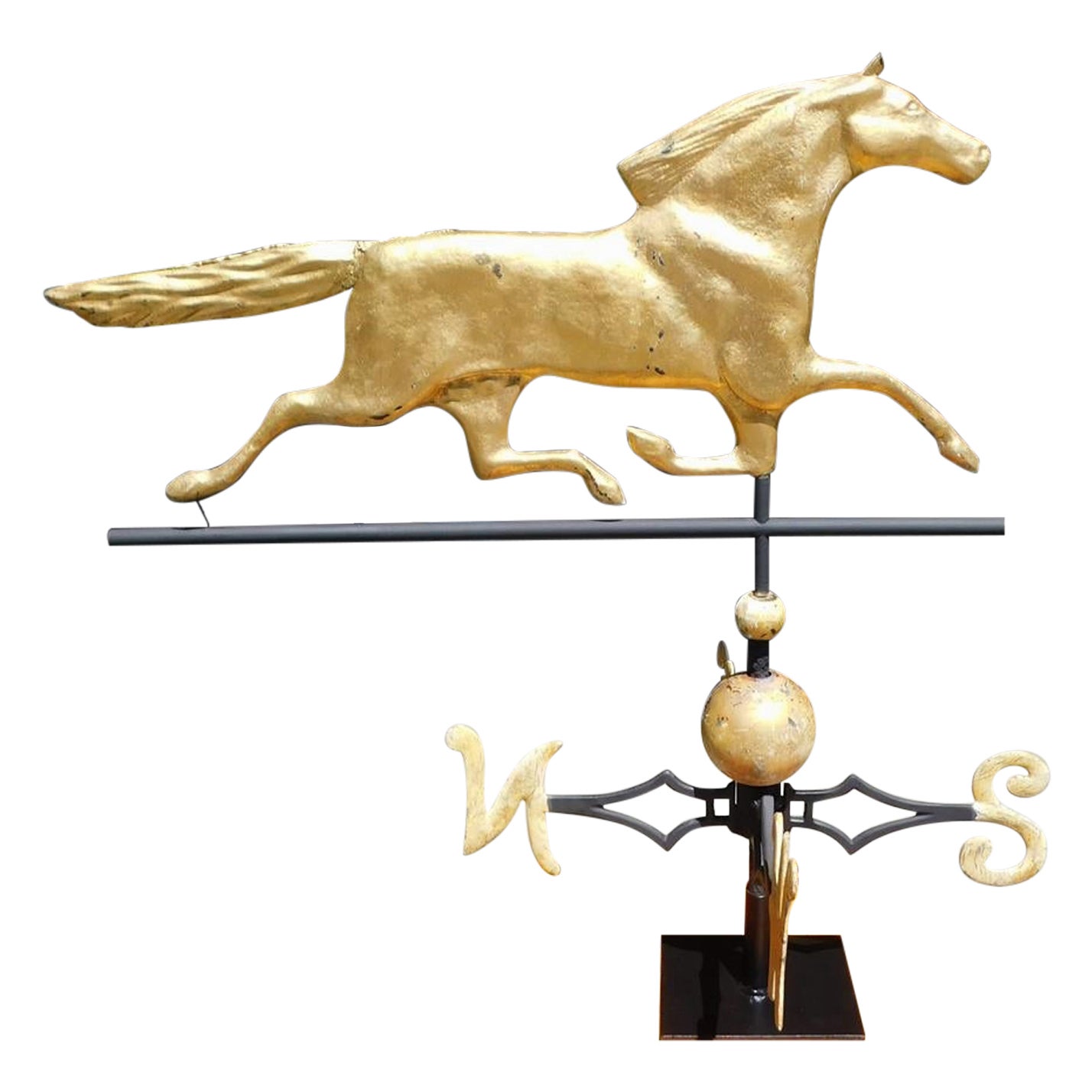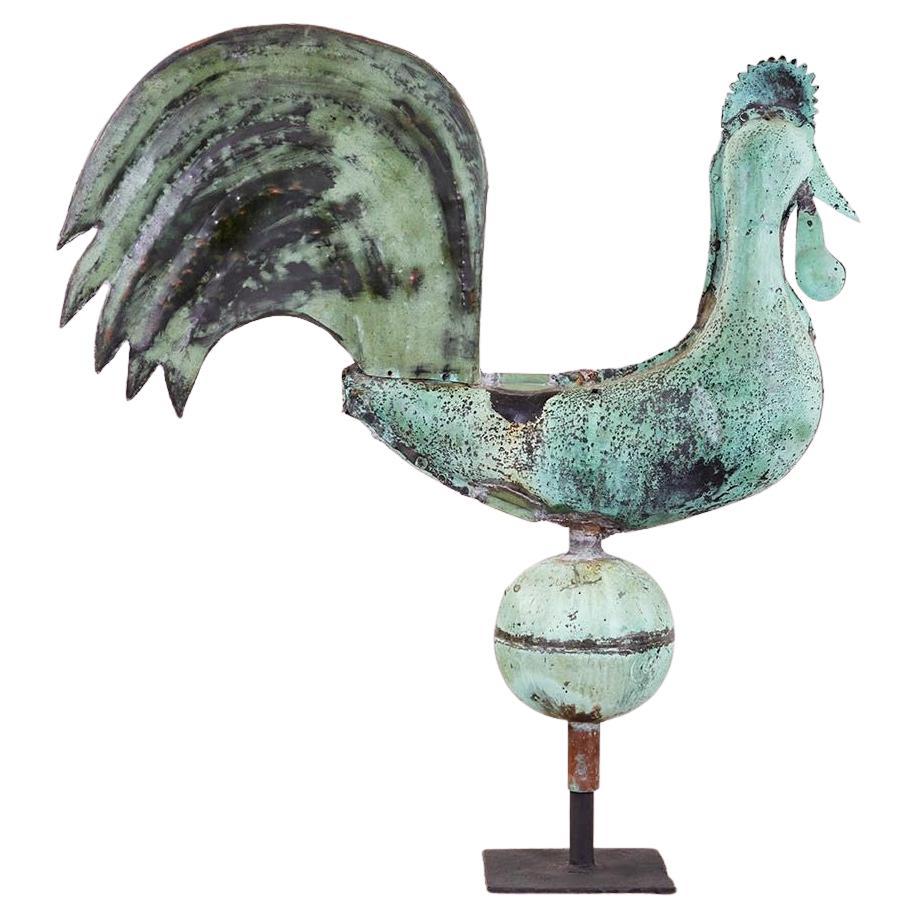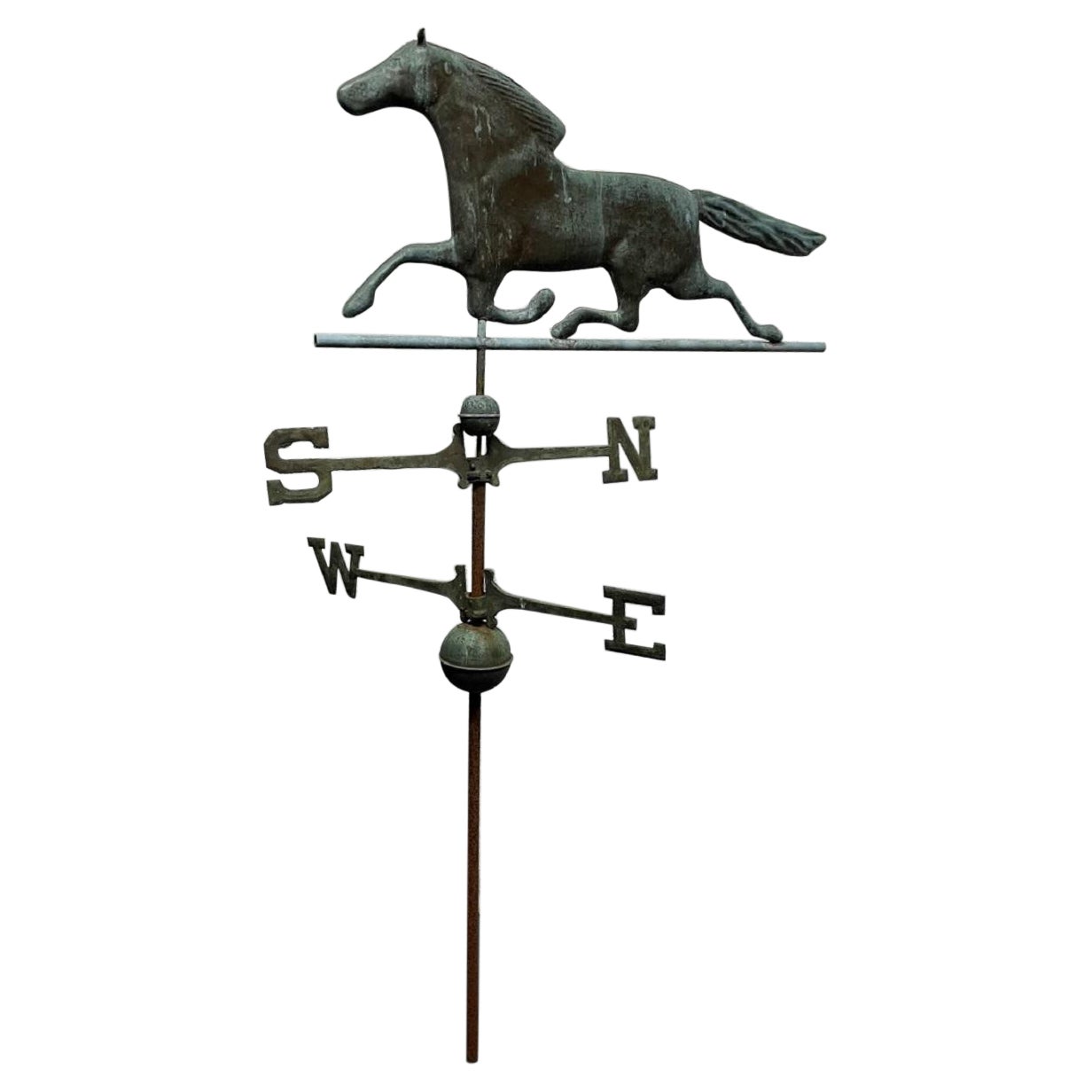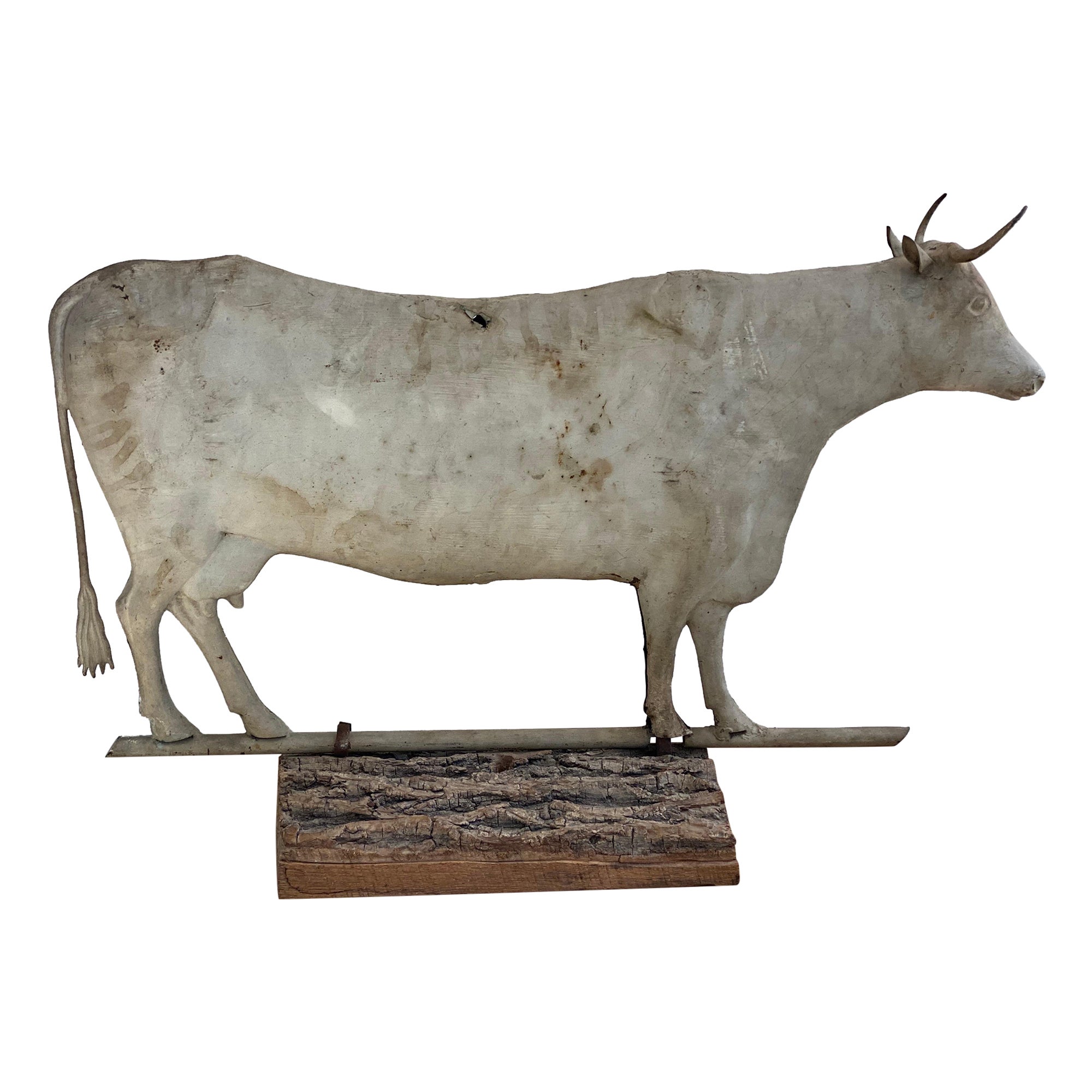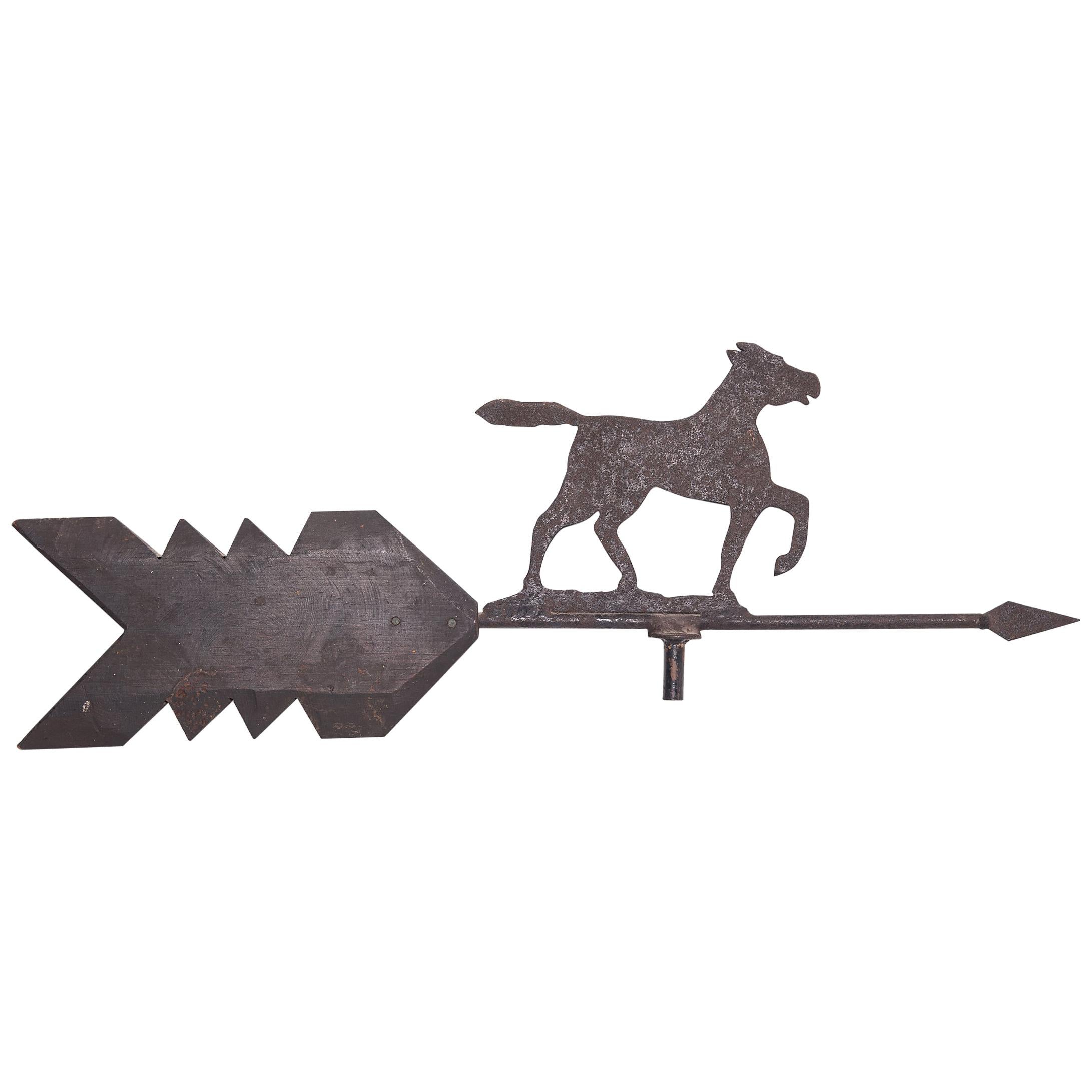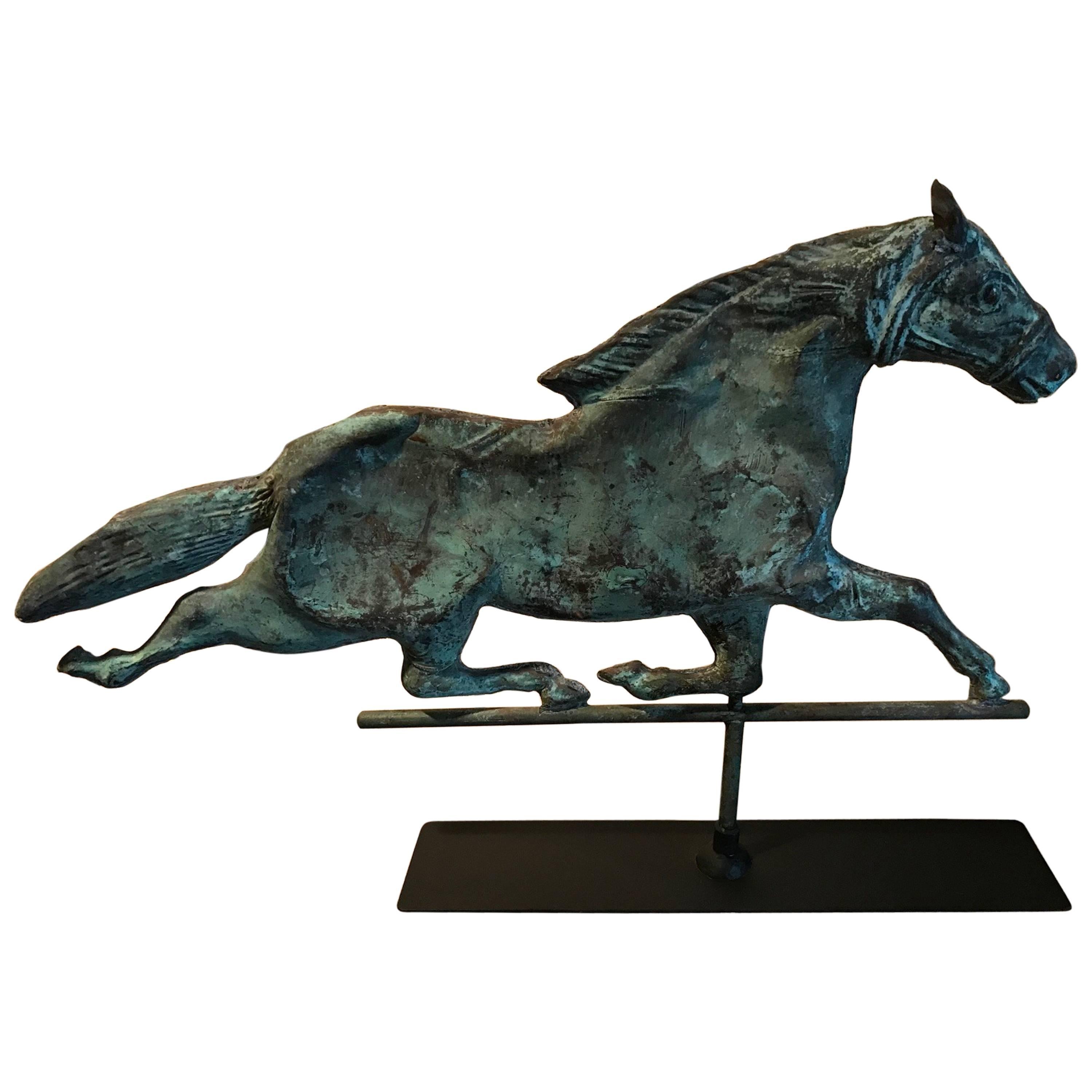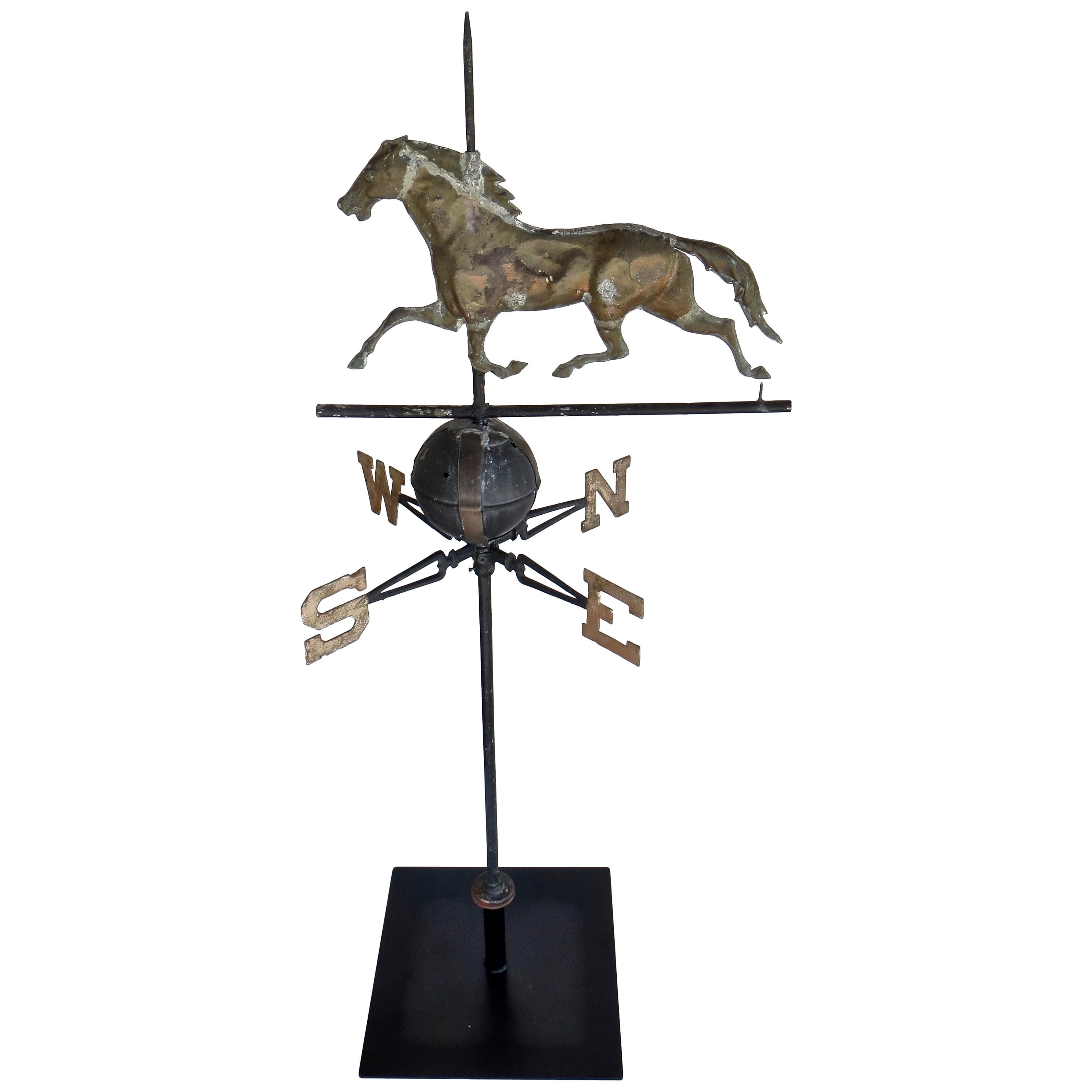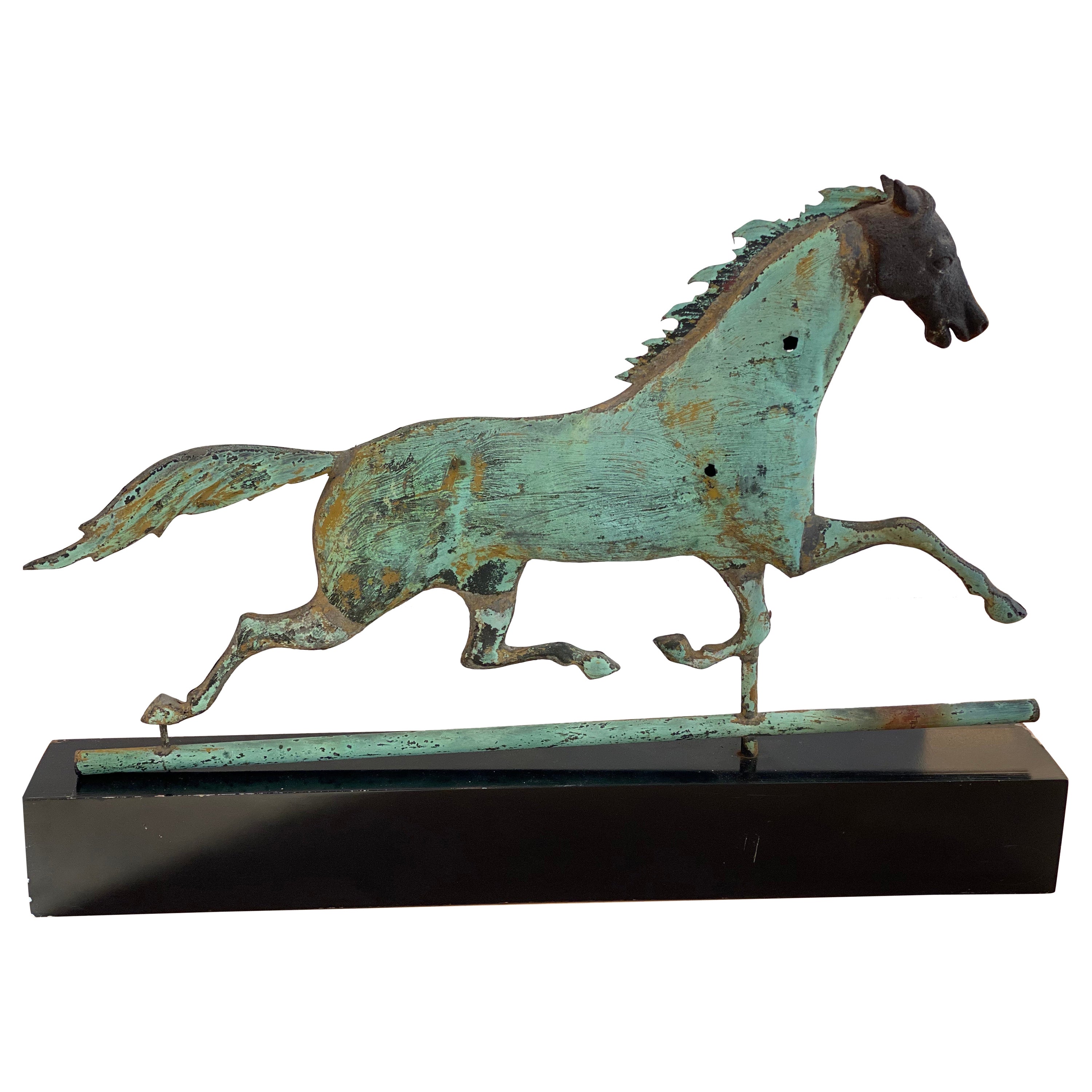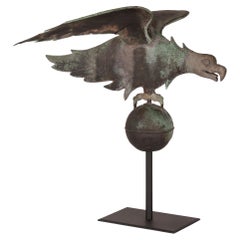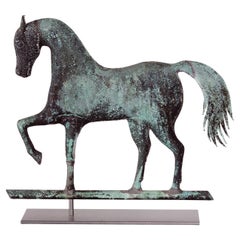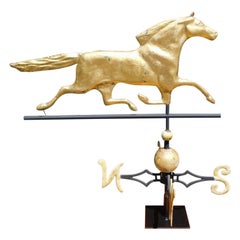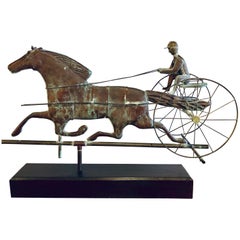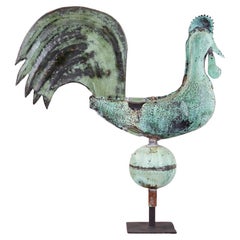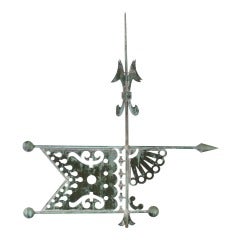
Bannerette Weathervane, Made By J.w. Fiske
View Similar Items
Want more images or videos?
Request additional images or videos from the seller
1 of 11
Bannerette Weathervane, Made By J.w. Fiske
About the Item
- Dimensions:Height: 34 in (86.36 cm)Width: 31 in (78.74 cm)Depth: 3 in (7.62 cm)
- Period:
- Date of Manufacture:1880-1890
- Condition:See Item Description.
- Seller Location:York County, PA
- Reference Number:Seller: wv-0391stDibs: LU8497764540
About the Seller
5.0
Recognized Seller
These prestigious sellers are industry leaders and represent the highest echelon for item quality and design.
Established in 1991
1stDibs seller since 2008
61 sales on 1stDibs
Typical response time: 10 hours
More From This SellerView All
- Eagle Weathervane, ca 1852-1870, Waltham MassachusettsLocated in York County, PAEagle weathervane in a beautiful form with great folk presence, possibly made by A.L. JEWELL & CO. (1852-1867) or its predecessor, Cushing & White / ...Category
Antique Late 19th Century Weathervanes
MaterialsMetal
- Prancing Horse Weathervane, Attributed to Jewel & Co, Waltham, Mass, ca 1860Located in York County, PAPrancing horse weathervane, attributed to Jewel & Co. Waltham, Massachusetts, CA 1860: Prancing horse weathervane by A.H. Jewell & Co., Waltham, MA. Made of molded copper, with a cast zinc head, applied copper ears...Category
Antique 1860s American Weathervanes
MaterialsMetal
- Merino Sheep Weathervane, Attributed to A.J Harris & Co, Boston, ca 1875Located in York County, PAMERINO SHEEP WEATHERVANE, THE VERY BEST OF ITS KIND AND WITH PERHAPS THE BEST SURFACE THAT EXISTS ON SURVIVING EXAMPLES, ATTRIBUTED TO A.J. HARRIS & CO., BOSTON, circa 1875 This fan...Category
Antique 1870s American Weathervanes
MaterialsMetal
Price Upon Request - Angora Chaps with Beautiful Tooled Leather, Made by John Clark SaddleryLocated in York County, PAWooly, angora chaps with beautifully tooled leather, made by the John Clark saddlery company of Portland, Oregon, signed, circa 1873-1929. Wooly chaps ...Category
Antique Late 19th Century American Native American Objects
MaterialsLeather
- Civil War Apron, Made In Cambridge, OH by Laura, Hynes, ca 1861Located in York County, PACIVIL WAR PERIOD APRON, MADE IN CAMBRIDGE, OHIO IN 1861 BY 12-YEAR-OLD LAURA HAYNES, WORN BY HER AT BENEFITS FOR THE U.S. SANITARY COMMISSION, PREDECESSOR OF THE RED CROSS, THAT STAFFED, FUNDED, AND MODERNIZED CIVIL WAR HOSPITALS Laura Haynes was born on the 17th of June, 1847 to Vincent and Sarah (Dillon) Haynes of Westland, Ohio (southeast of Columbus and due south of Zanesville). Vincent was listed as a physician in the 1850 U.S. Census, then as a lawyer in 1860, apparently having pursued both fields. It stands to reason that that during the Civil War (1861-1865), the Haynes family, being of means and with Vincent involved in the medical profession, might become involved in philanthropy to benefit Civil War hospitals. Made of plain weave cotton, this patriotic apron features 18 white, appliquéd, hand-sewn stars on a blue ground, cinched at the waist, with a blue belt incorporated below, followed by 13 vertical stripes, alternating red and white, likewise cinched, so that top and bottom have opposing triangular profiles. Aprons of this period did not generally have a loop or tie that went about the neck, to keep the breast portion up, but were rather pinned in place. All of the construction was accomplished by hand-stitching. One can see in the more crude stitching of the stars, how much more difficult it was to perform appliqué work than it was to hem fabric, especially for a 12-year-old girl. While the count of 18 stars may have had no purpose other than to fill the available space, to create a patriotic display, it may just as likely have been selected to reflect the number of states that were felt to be loyal to the Union at the time. Until July 4th, 1861, there were officially 33 stars on the American national flag. This, less the entire complement of 15 Slave States, would arrive at a count of 18. President Abraham Lincoln urged the nation not to do this, desiring not to give credence to secession, with his goal of keeping the Union together. But there were no flag police and people did as they wished, creating versions of the Stars & Stripes in both the North and the South that removed those the respective maker(s) deemed loyal to the opposition. Although rare, a number of American flags of the Civil War era are known that display 18 stars, likely to reflect the removal of 15 Southern States. In the upper center of the striped portion of the apron is a fraternal ribbon, made of blue satin silk, with a white metal brooch at the top and a gold button with an eagle below. This is decorated with a printed 13 star flag ribbon (applied), and with gilded text that reads: “The Women and Girl Workers of the Civil War; ’61-’65.” Next to this is the membership badge of the Women’s Relief Corp, which served as the women’s auxiliary of the Grand Army of the Republic, the primary organization for Civil War veterans. Below these, a hand-lettered exhibition tag was adhered, that reads as follows: “Made in 1861 at Cambridge Ohio by Laura Haynes; Age 12 Years; and Worn at Benefits for the Sanitary Commission [The Red Cross of 1861-5],” Followed by “Laura H. Green; Hotel St Mark; Oakland Calf.” Along the bottom of the tag is a brief title: “Flag-Apron of 1861-5,” with a circled item number “27.” The Sanitary Commission was founded in the Spring of 1861 by private citizens in New York City, who were appalled by the Army’s lack of medical supplies and sanitary conditions in the care of Civil War soldiers. Officially sanctioned by the War Department on June 9th of that year, and approved by Abraham Lincoln on June 13th, the chief planner and organizer was Boston-born writer and Harvard-educated clergyman, Henry Whitney Bellows of New York (b. 1814, d. 1882). Bellows modeled the organization after the work of Florence Nightingale in the British Sanitary Commission of the 1850’s, and brought with him a force of volunteers belonging to an organization he led called the Woman’s Central Association of Relief of New York. In 1863, Bellows would become one of the four founders of the Union League Club of New York, with fellow Sanitary Commission leaders Frederick Law Olmsted (the designer of Central Park, considered to be the father of modern landscape architecture,) plus George Templeton Strong (American composer, painter, lawyer, and prolific diarist), and Oliver Wolcott Gibbs (Harvard professor, chemist, and physician). The goal of the Union League Club was to join like-minded and influential, moneyed men with the cause of both the Commission and the Union in general. In 1881, Sanitary Commission nurse Clara Barton would carry the torch forward, expanding upon the concept to form the Red Cross. Sanitary Fairs—large, fundraising events held to benefit the Commission—were held in New York, Philadelphia, Baltimore, Chicago, St. Louis, and elsewhere. The Northern Ohio Sanitary Fair was almost certainly attended by Laura Haynes, 16 years old by that time, who is likely to have worn the apron there. Held in Cleveland from Feb. 22nd – Mar. 10th, 1864, the fair was opened by Major General James Garfield, future President of the United States, who, it is said, was extremely well received. About 3 years later, on June 11th, 1868, Laura married Robert M. Green of Cambridge, Ohio (northeast of Westland), who shared her June 17th birthday. Born 2 years prior to Laura, in 1846, Robert enlisted as a Corporal with “A” company of the 85th Ohio Infantry, a 3-month unit, on May 27th, 1862. Mustering in on June 10th, I Columbus, at Camp Chase, the 85th was assigned to guard Confederate prisoners at the garrison. He mustered out on the 23rd of September. By 1880, Robert & Laura Green had relocated to Oroville, California (Butte County...Category
Antique 1860s American Political and Patriotic Memorabilia
MaterialsCotton
Price Upon Request - 13 Hand-Embordered Stars Made by Great-Granddaughter of Betsy Ross, Sarah WilsonLocated in York County, PA13 HAND-EMBROIDERED STARS AND EXPERTLY HAND-SEWN STRIPES ON AN ANTIQUE AMERICAN FLAG MADE IN PHILADELPHIA BY SARAH M. WILSON, GREAT-GRANDDAUGHTER OF BETSY ROSS, SIGNED & DATED 1911: ...Category
Vintage 1910s American Political and Patriotic Memorabilia
MaterialsSilk
You May Also Like
- American Gilt Copper Full Bodied Horse Directional Weathervane, Fiske, C. 1870By J.W. Fiske & CompanyLocated in Hollywood, SCAmerican gilt copper full bodied running horse directional weathervane with two gilt circular spheres resting on squared iron stand, J.W. Fiske, late 19th century.Category
Antique 1870s American Folk Art Weathervanes
MaterialsCopper, Iron, Zinc, Gold Leaf
- St. Julien Weather Vane Attributed to J.W. Fiske 19th Century Full Bodied MetalLocated in Stamford, CTSt. Julien with Sulky Molded Copper Weather Vane, attributed to J.W. Fiske, New York, last quarter 19th century, full-bodied molded sheet copper horse and driver vane with cast iron horse's head and driver's hands, sheet copper reins and seat, copper rod wheels, mounted on a ebony base. This has the original threading as seen in the last photo below. A very similar Attrib Fiske Weathervane...Category
Antique Late 19th Century American Folk Art Weathervanes
MaterialsCopper
- Impressive Rooster WeathervaneLocated in Greenwich, CTEarly 19th century full-bodied overscale copper weathervane of a rooster on a sphere in having wonderful form and personality, and showing superb color and verdigris patination. Fran...Category
Antique Mid-19th Century French Weathervanes
MaterialsCopper
- English Banner WeathervaneLocated in Greenwich, CTStriking English copper weathervane having exceptional weathered surface in the form of a flying banner with spear finial, fleur-de-lis pointer and pierced decorated body. Great form...Category
Antique 1860s Great Britain (UK) Folk Art Weathervanes
MaterialsCopper
$14,900 - Antique Bronze Horse WeathervaneLocated in New York, NYAntique bronze horse weathervane. The weathervane has it's own original patina. The weathervane came from a house in New England.Category
Antique 1880s American American Colonial Weathervanes
MaterialsBronze
- American Painted Copper Cow Weathervane by Cushing & WhiteBy Cushing and WhiteLocated in Southampton, NYAmerican Painted Copper Cow Weathervane by Cushing & White. A off-white painted, full bodied, copper dairy cow on a wood stand. A wonderful unusual wea...Category
Antique Late 19th Century American Weathervanes
MaterialsMetal
Recently Viewed
View AllMore Ways To Browse
Antique Hat Molds
Antique Hat Mold
Witch Hat
Copper Balls
Copper Ball Finials
Witches Ball
Witch Ball
Copper Whale
Antique Witch Ball
Antique Witches Ball
Banner Weathervane
Whale Weathervane
Antique Banner Weathervane
Witches Balls
Antique Witches Balls
Antique Witch Balls
Antique Whale Weathervane
Witch Weathervane
